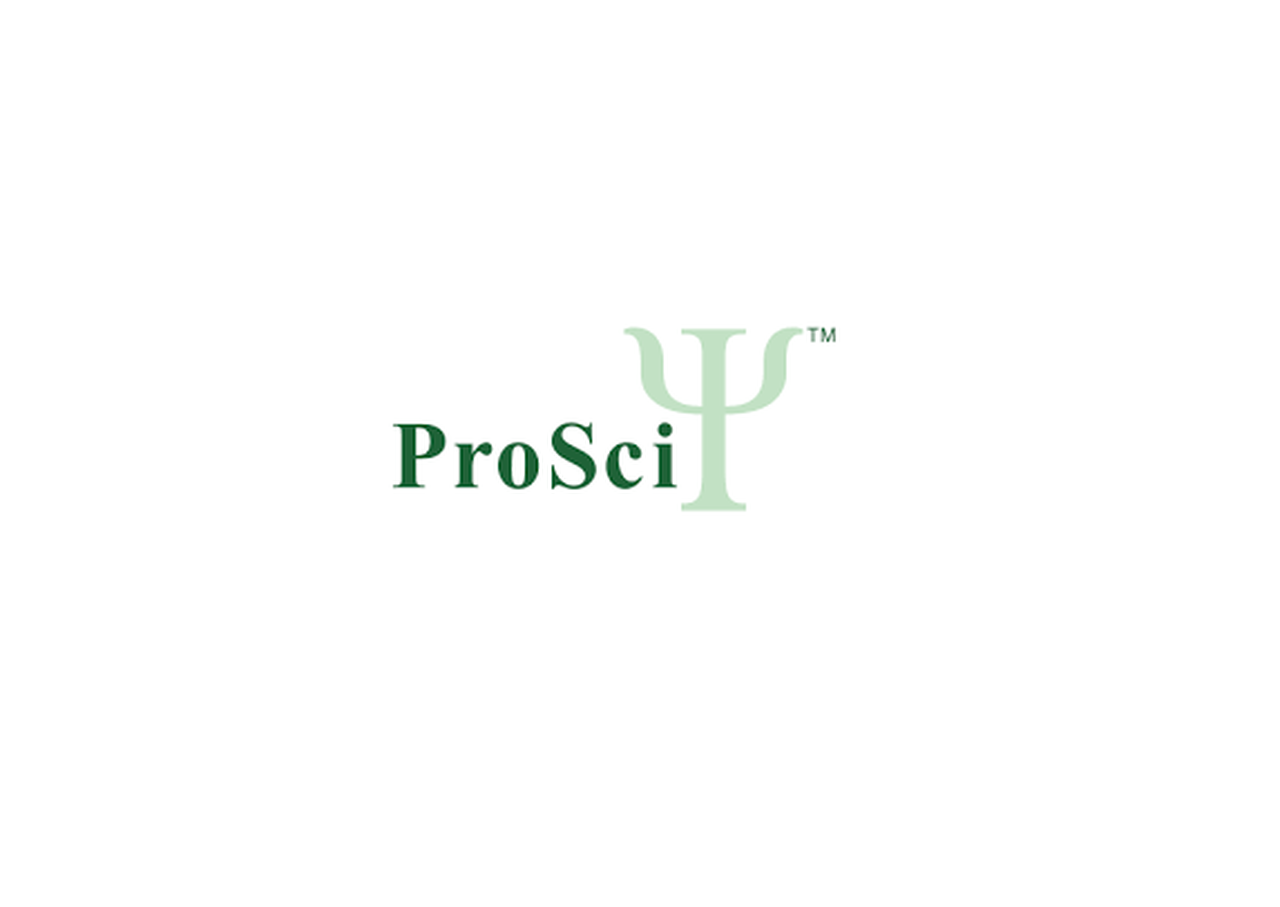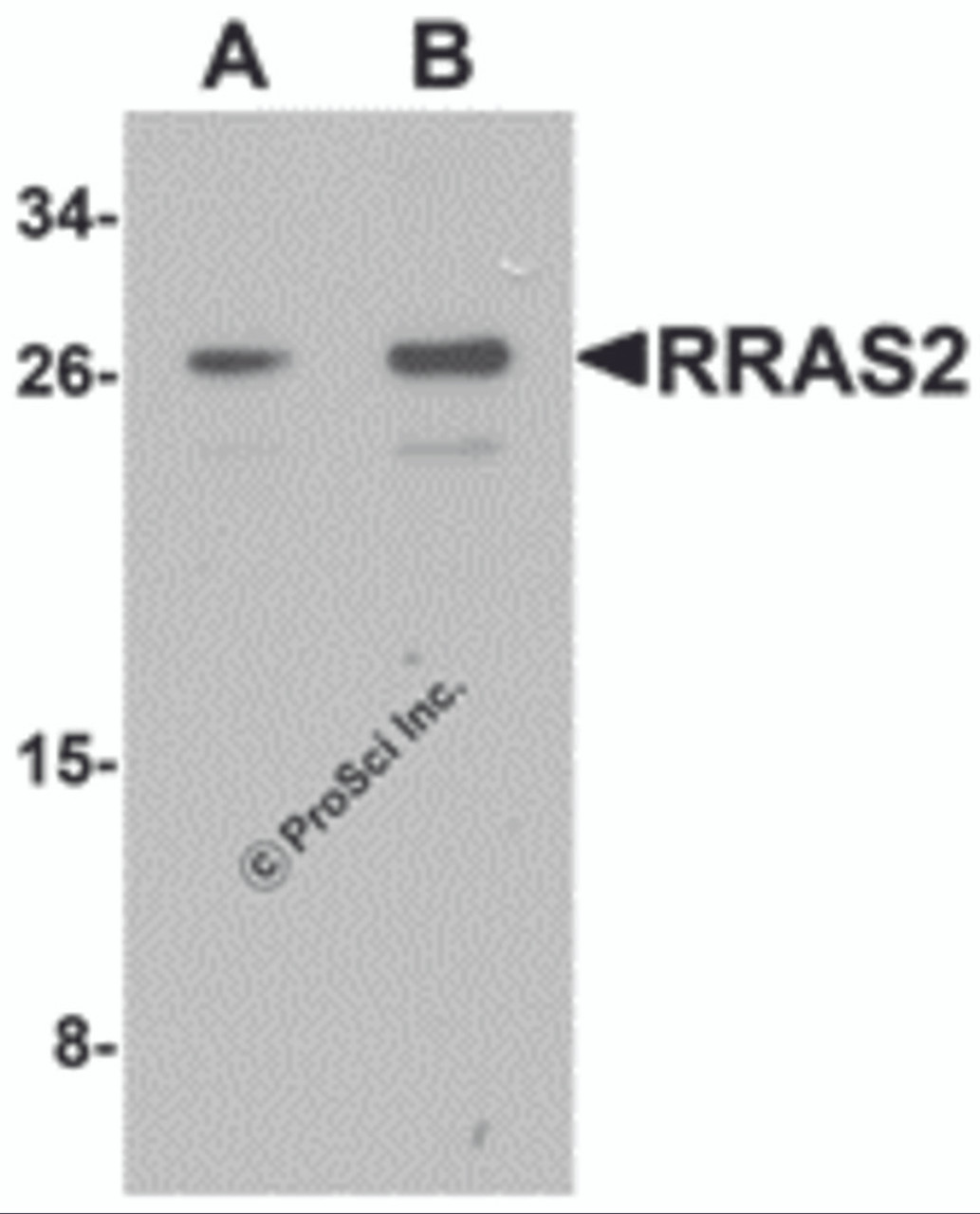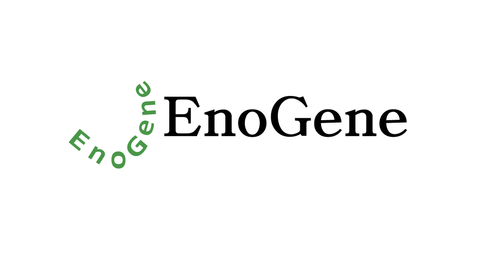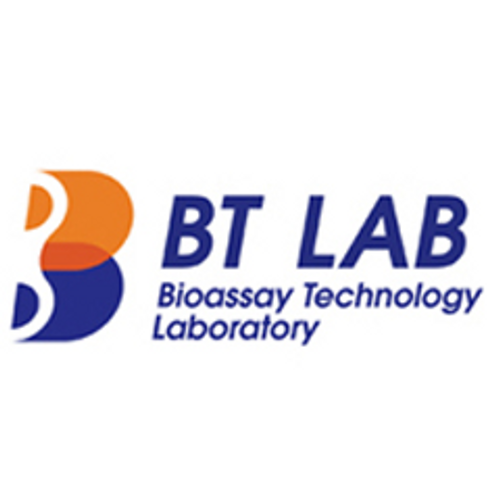Product Description
RRAS2 Antibody | 7249 | ProSci
Host: Rabbit
Reactivity: Human, Mouse
Homology: N/A
Immunogen: Rabbit polyclonal RRAS2 antibody was raised against a 16 amino acid peptide near the carboxy terminus of human RRAS2.
The immunogen is located within the last 50 amino acids of RRAS2.
Research Area: Cancer, Cell Cycle
Tested Application: E, WB
Application: RRAS2 antibody can be used for detection of RRAS2 by Western blot at 1 - 2 μg/mL.
Antibody validated: Western Blot in human samples. All other applications and species not yet tested.
Specificiy: Two isoforms of RRAS2 exists as a result of alternative splicing event.
Positive Control 1: Cat. No. 1205 - Jurkat Cell Lysate
Positive Control 2: N/A
Positive Control 3: N/A
Positive Control 4: N/A
Positive Control 5: N/A
Positive Control 6: N/A
Molecular Weight: 22 kDa
Validation: N/A
Isoform: N/A
Purification: RRAS2 Antibody is affinity chromatography purified via peptide column.
Clonality: Polyclonal
Clone: N/A
Isotype: IgG
Conjugate: Unconjugated
Physical State: Liquid
Buffer: RRAS2 Antibody is supplied in PBS containing 0.02% sodium azide.
Concentration: 1 mg/mL
Storage Condition: RRAS2 antibody can be stored at 4˚C for three months and -20˚C, stable for up to one year.
Alternate Name: RRAS2 Antibody: TC21, TC21, Ras-related protein R-Ras2, Ras-like protein TC21
User Note: Optimal dilutions for each application to be determined by the researcher.
BACKGROUND: RRAS2 Antibody: Activating mutations and overexpression of classical Ras subfamily members (K-RAS, N-RAS and H-RAS) have been widely investigated as key events in the development of human cancers. The RRAS subfamily of Ras-related proteins includes RRAS1, RRAS2 (TC21) and RRAS3 (M-Ras) show overall amino acid identity with the classical Ras subfamily (H-Ras, K-Ras and N-Ras) of 55–60%. RRAS2 is a small GTPbinding protein of the Ras superfamily of GTPases. It might transduce growth inhibitory signals across the cell membrane, exerting its effect through an effector shared with the Ras proteins. RRAS2 has high oncogenic potential and overexpression/mutations have been reported in several tumor tissues and cell lines.
 Euro
Euro
 USD
USD
 British Pound
British Pound
 NULL
NULL











![RRAS2 Antibody [AMM02539G] RRAS2 Antibody [AMM02539G]](https://cdn11.bigcommerce.com/s-452hpg8iuh/images/stencil/500x659/products/870165/1162232/logo__92149.1659788186__42309.1659866367.png?c=2)


